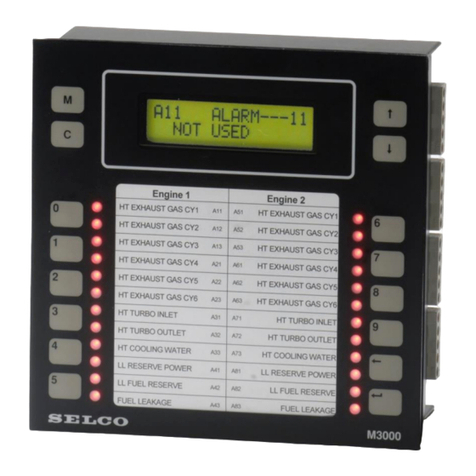M4200 - User manual
Revision: 07.03.2017 Page 1
Table of contents
TABLE OF CONTENTS......................................................................................................................................................1
INTRODUCTORY NOTES.................................................................................................................................................3
LAYOUT.................................................................................................................................................................................3
FACILITIES ON THE FRONT .................................................................................................................................................... 3
FACILITIES ON THE REAR ...................................................................................................................................................... 3
FUNCTION.............................................................................................................................................................................4
FUNCTION DIAGRAM.............................................................................................................................................................4
INSTALLATION INSTRUCTIONS.................................................................................................................................. 5
SINGLE UNIT..........................................................................................................................................................................5
MULTIPLE UNITS ...................................................................................................................................................................6
Synchronisation................................................................................................................................................................6
RELAY OUTPUTS....................................................................................................................................................................7
Normally de-energized..................................................................................................................................................... 7
Normally energized..........................................................................................................................................................8
Load capacity...................................................................................................................................................................9
OPEN COLLECTOR OUTPUTS ...............................................................................................................................................10
Normally de-energized...................................................................................................................................................10
Normally energized........................................................................................................................................................10
Load capacity.................................................................................................................................................................10
NC INPUTCONTACTS ..........................................................................................................................................................11
Example..........................................................................................................................................................................11
CABLE MONITORING...........................................................................................................................................................12
Example..........................................................................................................................................................................12
Input reference...............................................................................................................................................................12
Normally open inputs.....................................................................................................................................................12
Normally closed inputs..................................................................................................................................................12
Inputs in general.............................................................................................................................................................12
INPUTREFERENCE...............................................................................................................................................................13
Example..........................................................................................................................................................................13
PROGRAMMING BY SWITCHES.................................................................................................................................14
ROTARY SWITCH -OPERATIONALPRINCIPLE .....................................................................................................................14
DIP SWITCHES -OPERATIONAL PRINCIPLE..........................................................................................................................15
Factory default - dip switches........................................................................................................................................15
Factory default –all settings.........................................................................................................................................15
Set button........................................................................................................................................................................16
Acknowledge LED..........................................................................................................................................................16
DIP SWITCH -PROGRAMMING.............................................................................................................................................17
Input settings..................................................................................................................................................................17
General settings..............................................................................................................................................................19
WINDOWS®SOFTWARE................................................................................................................................................21
LOCATE HYPERTERMINALON THE PC..............................................................................................................................21
INSTALLINGHYPERTERMINAL...........................................................................................................................................22
WIRING................................................................................................................................................................................22
CREATE ANEW CONNECTION .............................................................................................................................................23
ASCI settings..................................................................................................................................................................24
SAVE CONNECTION .............................................................................................................................................................25
INTRODUCTION TO MICROSOFT®HYPERTERMINAL .........................................................................................................25
Icon explanation.............................................................................................................................................................25




























